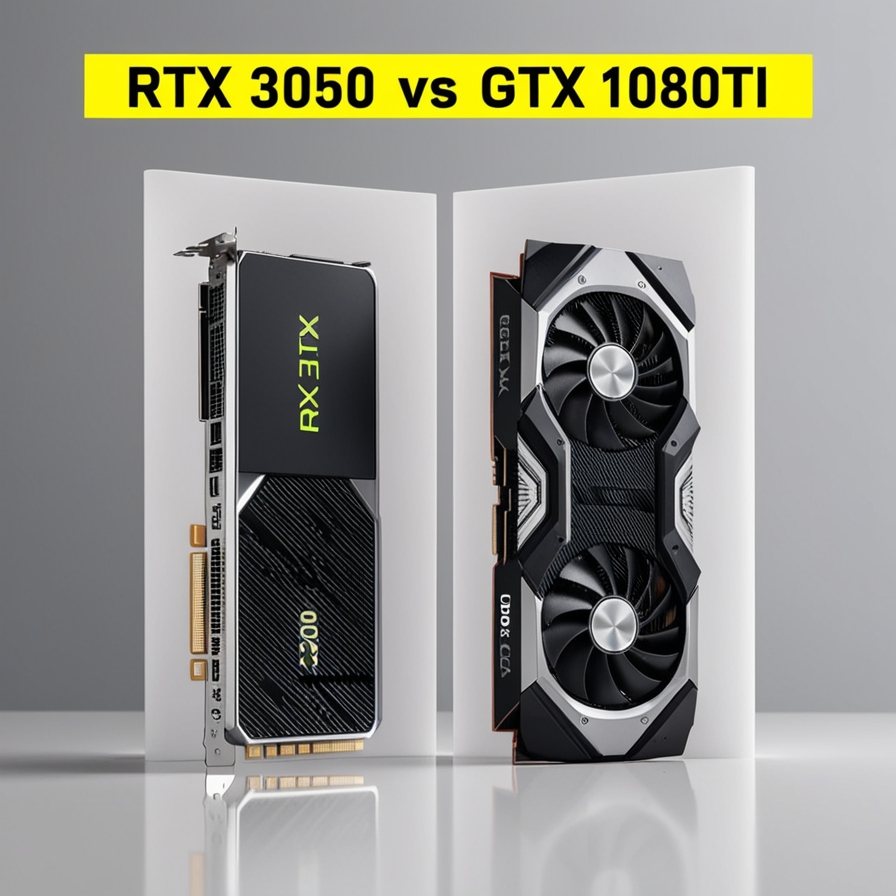As technology advances, graphics cards evolve, shaping the way we experience gaming and computing. This article delves into two significant GPUs from different eras: the GeForce RTX 3050 and the GTX 1080Ti. We will explore their features, performance, and suitability for various users.
Introducing the GTX 1080Ti

Launched in March 2017, the GTX 1080Ti quickly became a benchmark for high-performance gaming and professional workloads. Leveraging the Pascal architecture, it offered groundbreaking performance at the time, setting a high standard for gaming and computational tasks.
- Performance Legacy: The GTX 1080Ti was celebrated for its raw power, particularly in 4K gaming, making it a sought-after choice for gamers and professionals alike.
- Technological Milestone: As a flagship card, it featured cutting-edge technology of its era, including substantial memory and core counts.
Introducing GeForce RTX 3050

Released in January 2022, the RTX 3050 is designed for budget gamers seeking access to modern technologies such as ray tracing and DLSS. As part of the Ampere architecture, it brings next-gen features to a more accessible price point.
Budget-Friendly Design: Its pricing and performance make it an attractive option for those looking to upgrade to modern graphical capabilities without breaking the bank.
Modern Features: The RTX 3050 introduces advancements like ray tracing and DLSS, offering newer technologies to a broader audience.
Architectural Advancements
Pascal Architecture (GTX 1080Ti): The GTX 1080Ti utilizes Pascal, which brought significant improvements in performance and efficiency compared to the Maxwell generation. This architecture supports GDDR5X memory, enhancing bandwidth and performance-per-watt, making it suitable for 4K gaming and VR.
Ampere Architecture (RTX 3050): The RTX 3050’s Ampere architecture builds on the previous Turing generation, focusing on better rasterization and new features such as ray tracing. It offers efficient 1080p performance with support for modern technologies like DLSS and hardware-accelerated ray tracing.
Core Specifications Overview
| Feature | RTX 3050 | GTX 1080Ti |
|---|---|---|
| Release Date | January 2022 | March 2017 |
| Architecture | Ampere | Pascal |
| CUDA Cores | 2560 | 3584 |
| Base Clock Speed | 1552 MHz | 1480 MHz |
| Boost Clock Speed | 1777 MHz | 1582 MHz |
| Memory | 8GB GDDR6 | 11GB GDDR5X |
| Memory Bus Width | 128-bit | 352-bit |
| Memory Bandwidth | 224 GB/s | 484 GB/s |
| Ray Tracing Cores | 20 | None |
| Tensor Cores | 80 | None |
| DLSS Support | Yes | No |
| TDP (Power Consumption) | 130W | 250W |
| Power Connectors | 1x 8-pin | 1x 8-pin + 1x 6-pin |
| DirectX Support | 12 Ultimate | 12 |
| VR Compatibility | Yes | Yes |
| Recommended PSU | 550W | 600W |
| Price Range (2024) | $250 – $350 (new) | $250 – $400 (used) |
Performance Analysis
Gaming Experience:
- 1080p Resolution: The RTX 3050 shines in modern titles at 1080p with settings that include ray tracing and DLSS. However, the GTX 1080Ti outperforms it in older games due to its higher raw performance.
- 1440p Resolution: The GTX 1080Ti is more capable at 1440p, particularly in games that don’t use ray tracing or DLSS. The RTX 3050, while competent with DLSS, struggles in more demanding games without it.
- 4K Resolution: The GTX 1080Ti excels in 4K gaming due to its superior memory bandwidth and VRAM. The RTX 3050, with its limitations, is not ideal for 4K but can handle some games at lower settings.
Benchmark Performance:
In synthetic benchmarks, the GTX 1080Ti typically scores higher in traditional rasterization tests due to its core count and bandwidth. The RTX 3050 may surpass in tests that focus on ray tracing, showcasing its advantages in next-gen technologies.
Power Efficiency and Longevity
Power Consumption:
- GTX 1080Ti: With a TDP of 250 watts, the GTX 1080Ti requires a robust power supply and cooling system, reflecting its high-performance nature.
- RTX 3050: The RTX 3050 is much more efficient with a TDP of 130 watts, making it a better fit for budget builds without excessive power or cooling requirements.
Future-Proofing:
The GTX 1080Ti remains powerful for older games but lacks modern features like ray tracing and DLSS. As gaming technology advances, its relevance may decrease. The RTX 3050, while not as powerful, is more future-proof due to its support for newer technologies.
Target Users
GTX 1080Ti: Ideal for gamers who prioritize raw performance and are comfortable with purchasing used hardware. It’s also suited for high-resolution setups and playing older or less demanding titles.
RTX 3050: Perfect for budget gamers wanting modern features such as ray tracing and DLSS. It’s well-suited for those building a new system or upgrading from much older GPUs, focusing on 1080p gaming.
Practical Applications
For Content Creation:
The GTX 1080Ti’s higher CUDA core count and memory bandwidth make it a strong choice for tasks like video rendering and 3D modeling. However, the RTX 3050’s support for modern features can be beneficial in applications that utilize ray tracing and AI enhancements.
For Gaming:
The GTX 1080Ti excels in traditional rasterized games, while the RTX 3050 performs better in titles that support ray tracing and DLSS. For e sports and lower-resolution games, the RTX 3050 offers better efficiency.
For VR and High-Resolution Gaming:
The GTX 1080Ti is better suited for VR and high-resolution setups due to its memory and bandwidth. The RTX 3050 can handle VR but may face limitations in more demanding scenarios.
Conclusion
Choosing between the GeForce RTX 3050 and GTX 1080Ti depends on what you prioritize: raw power or modern features. The GTX 1080Ti offers impressive performance for its age, particularly in high resolutions and older titles. The RTX 3050, with its support for ray tracing and DLSS, provides a more future-proof option for gamers looking to experience the latest advancements without a hefty price tag.

Leave a Reply
You must be logged in to post a comment.